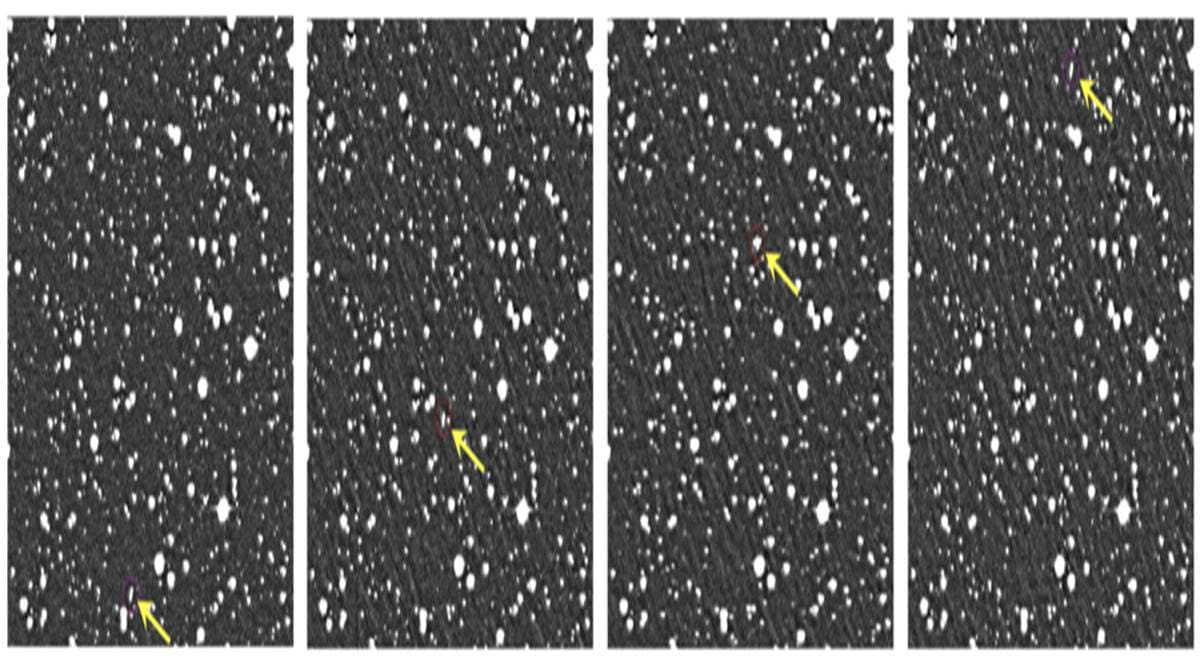
[ad_1]
 NASA’s OGO-1 satellite is set to enter Earth’s atmosphere this weekend (Source: Catalina Sky Survey/University of Arizona/NASA)
NASA’s OGO-1 satellite is set to enter Earth’s atmosphere this weekend (Source: Catalina Sky Survey/University of Arizona/NASA)
A NASA satellite, Orbiting Geophysics Observatory 1 spacecraft (OGO-1) launched in September 1964 is going to retire as earth’s gravity is finally going to catch up with it. Weighing 487 kg, OGO-1 is going to break up upon entering Earth’s atmosphere this weekend.
“OGO-1 is predicted to re-enter on one of its next three perigees, the points in the spacecraft’s orbit closest to our plant, and current estimates have OGO-1 re-entering Earth’s atmosphere on Saturday, Aug. 29, 2020, at about 5:10 p.m. EDT [2110 GMT], over the South Pacific approximately halfway between Tahiti and the Cook Islands,” NASA officials wrote in the press release on August 27.
The OGO-1 was launched to help scientists understand Earth’s magnetic environment and how it interacts with the sun while orbiting around it. Valuable data was gathered by the satellite until 1969 and two years later it was decommissioned. Since then the OGO-1 has been revolving around on a highly elliptical orbit. It takes two days for the satellite to complete its trajectory around our planet.
The almost half a ton satellite poses no threat to Earth when it falls. There were five other similar satellites launched in the 1960s which have been retired already. All five of them entered the earth’s atmosphere and their debris landed in various patches of the ocean with the most recent one retiring in 2011.
“The spacecraft will break up in the atmosphere and poses no threat to our planet — or anyone on it — and this is a normal final operational occurrence for retired spacecraft,” they added.
The forecast of the spacecraft entering Earth’s atmosphere was predicted by the University of Arizona’s Catalina Sky Survey (CSS) and the University of Hawaii’s Asteroid Terrestrial-impact Last Alert System (ATLAS). Both these systems spotted an object that was on an impact trajectory. Later on, researchers at the CSS, the Center for Near-Earth Object (NEO) Studies at NASA’s Jet Propulsion Laboratory in Southern California and the European Space Agency’s NEO Coordination Center learned upon analysis that it was not an asteroid and identified the object as OGO-1.
Express Tech is now on Telegram. Click here to join our channel (@expresstechie) and stay updated with the latest tech news.
📣 The Indian Express is now on Telegram. Click here to join our channel (@indianexpress) and stay updated with the latest headlines
For all the latest Technology News, download Indian Express App.
© IE Online Media Services Pvt Ltd
[ad_2]
Source link
